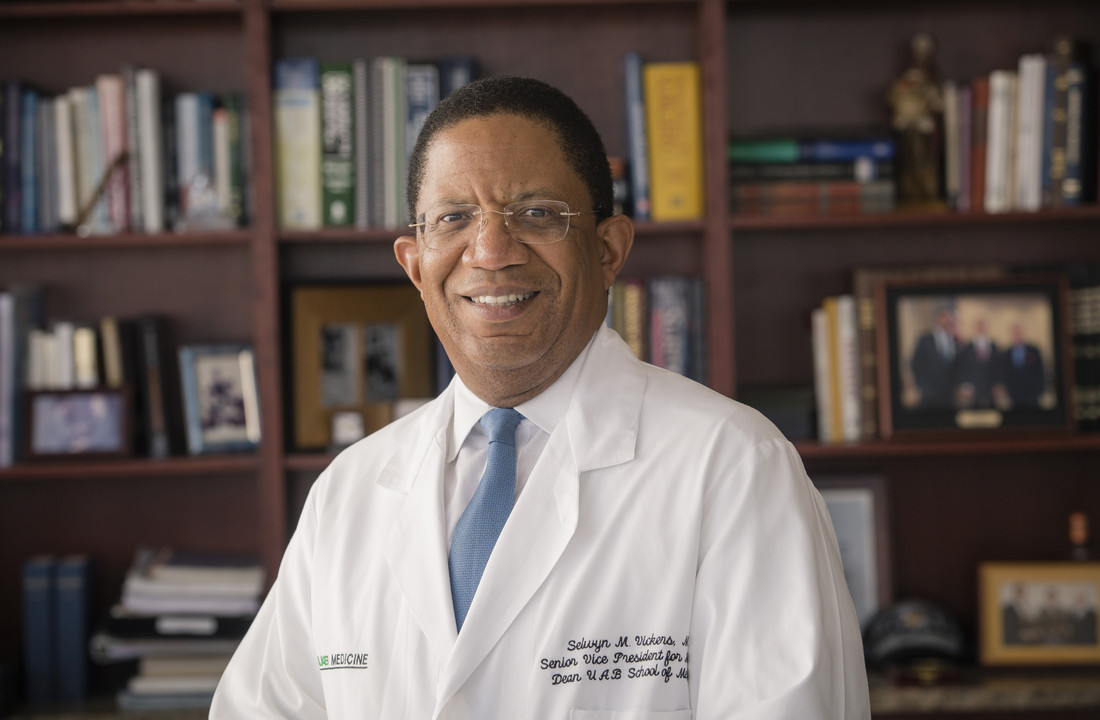 I’m proud to say that over the past five years, the School of Medicine—as a part of the broader enterprise of UAB and UAB Medicine—has experienced outstanding growth in all areas of our mission: clinical care, education, research, and beyond. As an academic medical center, UAB has continued to gain recognition and to garner success thanks to the aligned leadership of President Ray Watts and his leadership team, Dr. Will Ferniany and the UAB Health System, department chairs, center directors, the SOM leadership team, and all our faculty and staff.
I’m proud to say that over the past five years, the School of Medicine—as a part of the broader enterprise of UAB and UAB Medicine—has experienced outstanding growth in all areas of our mission: clinical care, education, research, and beyond. As an academic medical center, UAB has continued to gain recognition and to garner success thanks to the aligned leadership of President Ray Watts and his leadership team, Dr. Will Ferniany and the UAB Health System, department chairs, center directors, the SOM leadership team, and all our faculty and staff.
On the clinical front, our numbers are continuing to rapidly climb. In his new roles as president of the Health Services Foundation, chief physician executive of UAB Medicine, and senior associate dean of Clinical Affairs for the SOM, Dr. Tony Jones has done a yeoman’s job supporting numerous strategic clinical initiatives around access, hospital medicine, and primary care. We’re seeing more patients and performing more surgeries. Our outpatient clinical encounters have moved from 1,143,118 in 2013 to 1,492,348 this past year. Our total number of surgery cases has grown from 41,297 to 49,130. As the Health System has expanded, so has our impact on the local and state economies. In fact, one in four Birmingham residents is either a UAB employee, student, or patient. That is a quite a reach.
When it comes to educating future physicians and scientists, our strides have been both qualitatively and quantitatively positive. Our most recent entering class was 16 percent underrepresented in medicine—a number that has doubled since 2013. In a state that is ethnically diverse, it’s very important that we make sure the physicians working in our communities look like the people they’re serving. Program-wise, we’ve accomplished a long list of goals—including establishing Learning Communities, a service learning curriculum, Mini Medical School, the Office for Interprofessional Simulation, the Office for International Medical Education, and so much more.
Over the past five years, an elite group of eight academic medical centers has experienced more than $100 million in net NIH funding growth. They are Northwestern, Columbia, Mount Sinai, Washington University in St. Louis, Stanford, Pittsburgh, UC San Francisco, and UAB. Among that group, UAB had the second highest percent of growth at 42.8 percent—trailing only Northwestern by a mere 0.3 percentage points. In overall NIH rankings, UAB has gone from 31 in 2013 to our current position at 21. When private schools are removed from that group, we leap into the eighth spot. Our total NIH dollar amount has grown from $133,264,288 in 2013 to an astounding $232,996,499 this past year. The number of PIs has also seen advancement, having moved from 259 to 323—an increase of nearly 25 percent. This growth is truly phenomenal, and I can’t adequately express how unique our institution is in the country at this moment in time.
On top of all of this, we’ve expanded the School of Medicine by creating a new regional campus, extending the overall reaches of our regional campuses, launching new departments, establishing new institutes and centers, and hiring new leaders. Not to mention, we recently brought in the single largest gift that UAB has ever received—$30 million from O’Neal Industries, Inc.—to name the cancer center the O’Neal Comprehensive Cancer Center at UAB and to extend its research and clinical impacts even further.
You may be wondering how we’ll keep up this extraordinary rate of progress. I won’t pretend there aren’t challenges ahead, but I know our team is up to the test. First, we have to ensure that we’re looking out for the well-being of our faculty and staff. I am confident that Dr. David Rogers will continue to expand our wellness efforts and drive us toward healthier living. Additionally, we are constantly examining and re-examining our use of space. Not only will we find more efficient ways to utilize the space that we already have, but we’ll also look toward future expansion. And finally, we need to be relentless in our pursuit to attract the best and the brightest to Birmingham, so we can further establish this city as one of the country’s most elite medical hubs.
I’d like to thank each of you for your grit and your ingenuity. None of this success would be possible without the remarkably collaborative spirit that has become the hallmark of UAB’s environment.